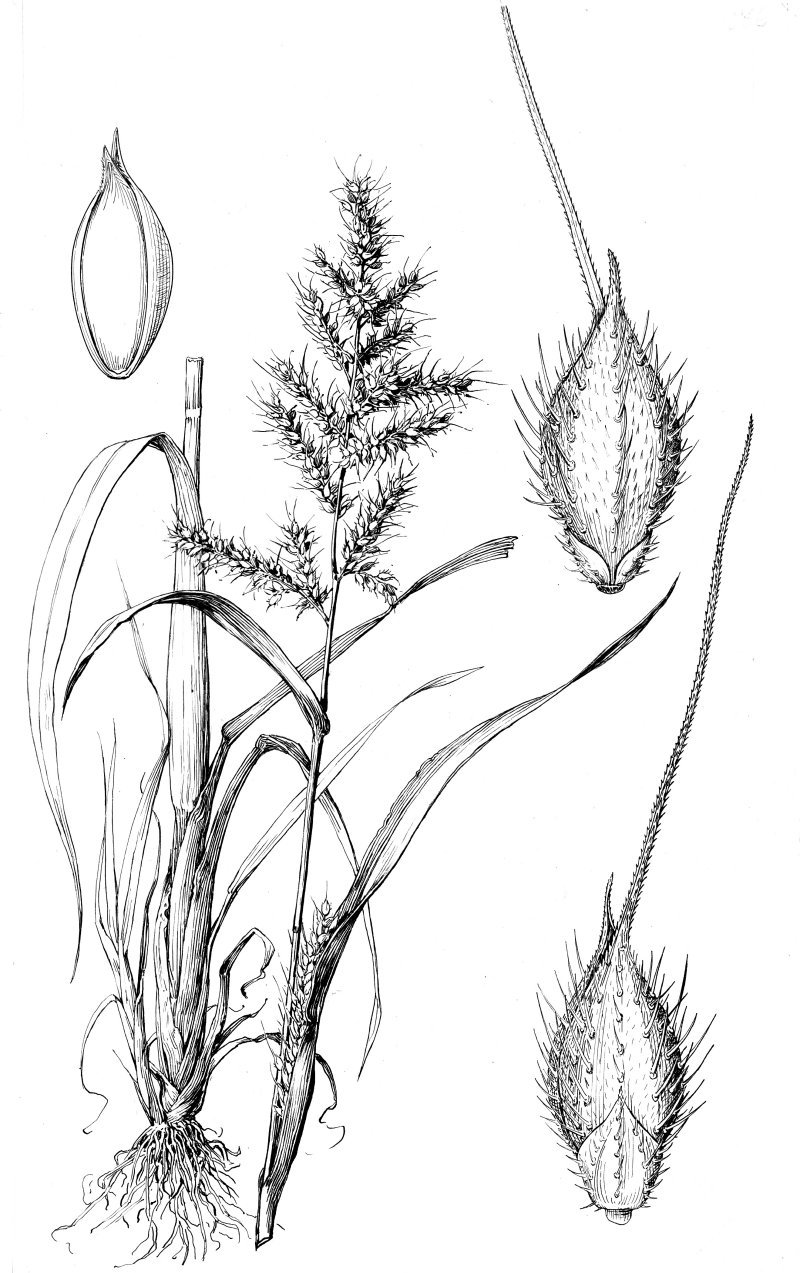
Echinochloa crus-galli (L.) Beauv. Barnyardgrass Habit: Annual. Culms: Stout, rather succulent, branching from the base, ascending or erect, 30-150 cm. tall. Blades: Commonly 10-30 cm. long, 5-15 mm. wide (sometimes longer and wider), glabrous, margins scabrous. Sheaths: Glabrous. Ligule: Absent. Inflorescence: Panicle 10-20 cm. long, erect or nodding, ovoid, rather dense, of several unilateral erect or spreading racemes, very variable, deep purple to pale green, the lower racemes somewhat separated from the rest, sometimes branched, having long setae among the branches. Spikelets: About 3 mm. long, excluding the awns, 1- or 2-flowered, crowded in small clusters or racemes, in two rows on one side of the flat rachis, long-awned (5-10-(30) mm.) or nearly awnless. Glumes: First broadly deltoid, one third as long as the second, pointed, hispid, second glume and sterile lemma equal, pointed, mucronate, or the glume short awned and the lemma long awned, sometimes conspicuously so, enclosing a membranous palea and sometimes a staminate flower, nerves strongly tuberculate-hispid, hispidulous between the nerves. Fertile lemmas: Planoconvex, smooth and shining, acuminate, the margins inrolled except at summit where palea is not included. Palea: Sterile palea 2 -3.5 mm. long. Fruit: Whitish or brownish, 2.5-3 mm. long, elliptic, turgid, narrowed into a cusp or point. Habitat: Moist open places, ditches, riverbanks, waste places and cultivated fields. Kansas Range: Throughout.